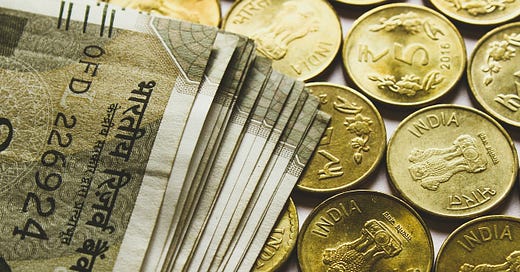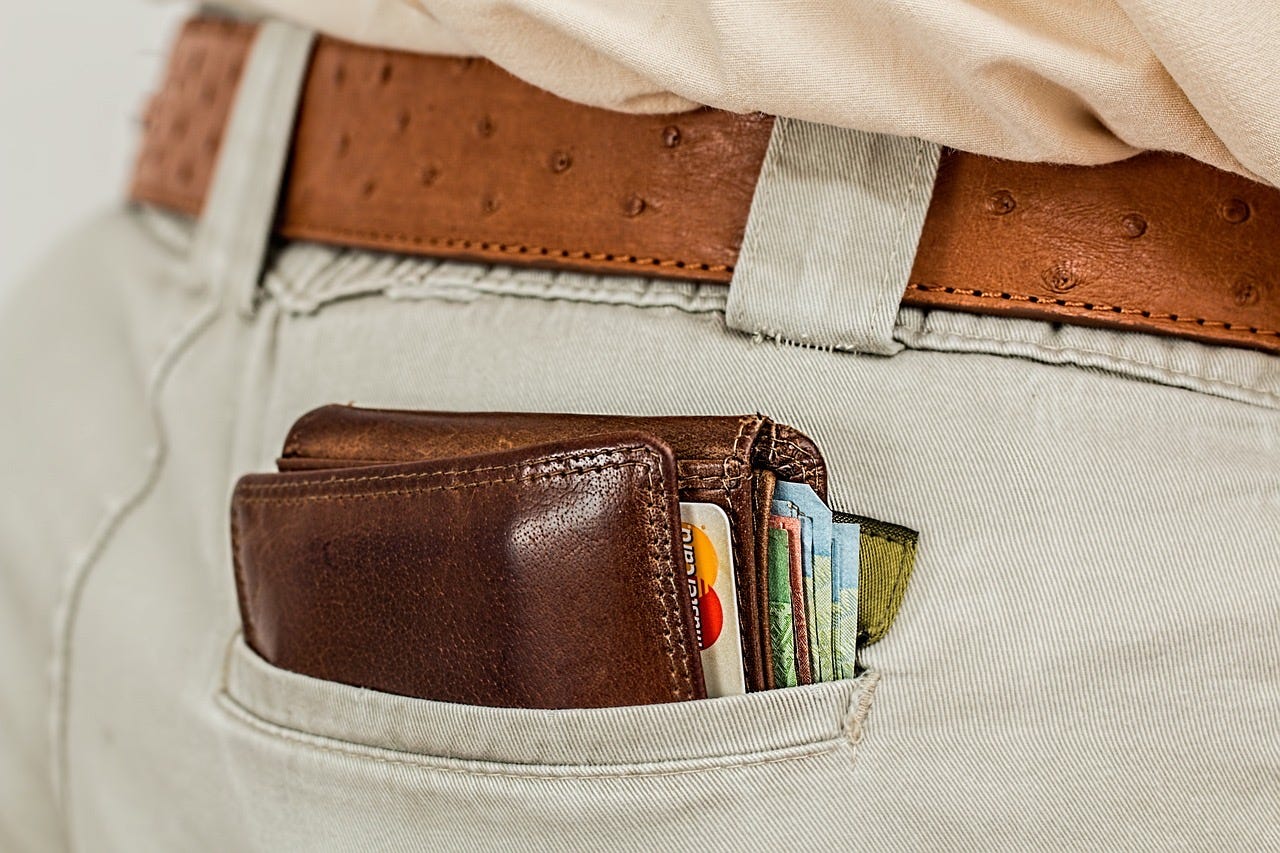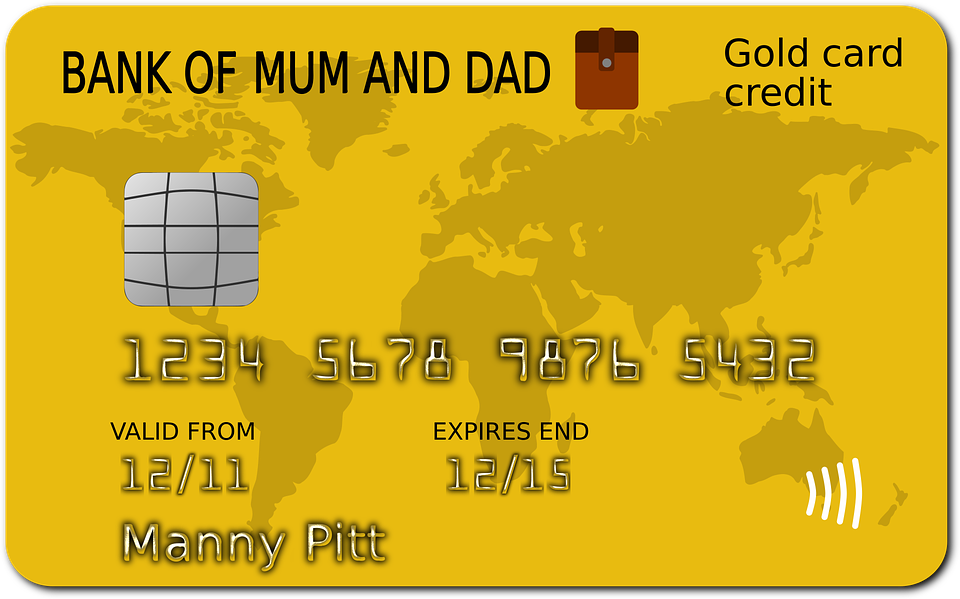Managing Money on Your Solo Travels
Cash, cards, travellers cheques, wire transfers and other alternatives, all have their place for the solo traveller
“Money, money, money . . In the Rich Man’s World” - ABBA
We all need money while travelling, be it for accommodation, eating out, or for tickets to travel.
There are many things you can do as a solo traveller without spending money, such as free museums or simply walking on the beach. By the end of the day though, you’ll be needing somewhere to lay your head and find a place to eat. And that is going to cost.
Let’s assume for the moment, that you have saved your precious pennies and are ready to hit the road to see the world. How do you manage your money?
As a solo traveller, if you have a money crisis, you can’t rely on help from a partner. You are on your own, so some pre-planning will relieve any money stresses.
What Are the Top 10 Ways to Manage Your Money While You Travel?
The simple answer is a mixture of cash in your pocket, credit and debit cards, travellers cheques (remember them?) and access to emergency funds if needs must.
Let’s take a look at each in turn and some other alternatives.
1. Using Cash While Travelling
In many parts of the world since the pandemic, cash appears to be on the way out. There are many places that now refuse cash and only accept some sort of card payment.
That said, cash is still king pretty much everywhere, so you will need to carry some in your pocket or purse.
Take care here not to keep ALL of your cash in the same pocket or purse. If you have the misfortune to be the victim of a pickpocket, you’ll loose everything. Split your cash and your cards, into several places on your body or in your bags. Use a money or body belt for some of your cash, but never access it in a public place. That way, if you become a victim, you will still have cash hidden in other places.
Become familiar with the local currency, both notes and coins. If you don’t know the value of what you are holding in your hand, you stand a much higher chance of being ripped off.
Something else to avoid, is standing in front of a street trader, with a bundle of notes in your hand, looking slightly lost on how much to pay. If you think about it, you wouldn’t do that at home.
Become confident with the local currency.
2. Drawing Cash
However little you spend, there will come a time when you will need to top up your cash reserves. It pays to plan ahead here, depending on which country you are visiting.
ATM machines, often knows as cash-points, can be found pretty much anywhere, but the further you travel from civilisation, the fewer you will see.
Fees at ATMs will depend on several factors. The first, is your choice of card (more on this in a moment). Next, will be any local charges by the bank or third-party company managing the machine.
In many retail shops where there is an ATM, you can expect to be charged a fee to draw cash, in addition to any other charges. The best place to draw cash is, generally, from a machine in or outside a bank. Watch however, for machines close to a bank, which are third-party operated, with a poor exchange rate and fees. These machine may look as if they are bank run. When a bank is open, go inside and use a machine there.
The exchange rate from your home to the local currency will vary depending on your method. The best rates will usually be with a major bank, with the worst at an airport exchange booth. Again, using the right card can help here.
Changing money on the streets “. . . really gets rates my friend- beat the bank . . .” is never wise. The rate is almost certainly not good and the notes may well be forgeries. Exchanging money on the streets is illegal in many countries.
Top Tip: ATMs will generally issue the highest value notes, which may be difficult to use in some places. Rather than drawing 100 (whatever’s) which will give you two 50s, draw an odd number such as 90. The ATM will probably spit out 1x50 and 2x20s, which are easier to spend.
3. Choosing the Right Card
An essential consideration before you travel.
Your local bank has issued you with a debit or credit card, both of which are perfect at home. However, will they work abroad?
I have seen many a traveller who discovered that their cards are not valid outside their own country. This can include travellers from the United States, who never considered that their cards would be declined overseas. Americans seem completely bamboozled by this, as they expect the mighty dollar to be valid anywhere on the planet.
It is simple to check with your bank, that your cards can be used in the countries you intend to visit. The bank can either authorise your card for international use, or issue you with a separate card which will work for you. If you plan to visit several countries or are on an extended trip, it is wise to advise your banks and card issuers, so they don’t decline unexpected transactions.
Banks charges vary for overseas transactions and when drawing cash, it is worth researching your bank’s rules before your money is drained away on fees.
The scope of this article doesn’t allow a country by country review of the best cards, so let’s look as just one example.
In the United Kingdom, where the author lives, I use a Monzo card. Monzo is an internet online only bank, which issues a card and has an app. At the time of writing, a reasonably useful weekly cash withdrawal limit by value and by the number of transactions and can be used anywhere, free of a fee. Go over the limits and you will see a charge. In addition, on the exchange rate, what they seem to do, is to gather transactions from all of their users in a particular country for a day, and apply a uniform bank-rate exchange rate. This I have found to be very beneficial.
Check with your own bank to see what they offer, or look for an additional card which is good for travel.
4. Credit Cards while Travelling as a Solo
Cards of many shades and colours can be used around the world. Again, if you are some way from civilisation, that may not always be the case.
Not everywhere accepts cards, especially in remoter areas, where cash is the only method of payment. ATMs relay on electricity and internet connections, which can be unreliable in some parts of the globe.
Your own card issuer will have a range of charges for purchases made in foreign currencies. I have seen on my own card, a 2.5% fee, plus an additional transaction fee for a single purchase. Check what charges your issuer imposes and consider whether you need an alternative card for your travels.
Needless to say, you will know how you want to pay off any charges to your credit card.
A warning about some cards. American Express is not widely accepted outside the United States. While that may be expected in some remote parts of the world, is is the same in places such as Western Europe. The coffee shop I am sitting in here in the UK, part of a national chain, does not accept Amex. While the green card can be useful in many places, never travel with just an Amex card and expect all to be well. The Discover card is virtually unknown in Europe.
5. Using a Debit Card while Travelling
You almost certainly have a bank debit card in your arsenal.
The same rule applies as with a credit card; make sure that your a card will work outside your own country.
Debit cards can attract similar charges to credit cards, so check ahead of travelling whether there are better options.
VISA and MasterCard debit cards can be used pretty much anywhere that accepts cards.
ATMs and readers at locations in some parts of the world need a chip and PIN card. Ask your bank to provide you with at least a PIN number for your card, as you will need that frequently in much of the world.
If your debit card is stolen, a thief could clear out your bank account, so take care where you carry the card on your person.
Top card tip: Never carry all your cards in one place, otherwise you risk loosing them all in one go. Spread then around in different pockets or purses. If you have several cards, consider leaving one in a safe at your hotel.
6. The Pre-Loaded ‘Cash Card’
This is a way to make payments in the local currency, by having funds loaded on to a travel money card.
How these cards work will vary, but in essence, you pre-load money on to the card ahead of using it. Think of it as a debit card that can never go overdrawn.
Depending on the card, you can load your own local currency and then any foreign transactions will see charges made based on the rate of the day, perhaps with additional fees.
More common, is that you load the card with one or more currencies. For instance, you could buy Euros, Australian Dollars or Bangladesh Taka and hold those on a single card in separate ‘pots’. Then, when you are in the appropriate country, you are using the local currency when you use the card for a payment.
Charges, exchange rates and commission are fixed at the point you load the ‘cash’.
These cards are managed by the appropriate app on your device, and/or from a website. You can top-up currencies of your choice in an instant, with the app linked to your home bank account. Look to set this up before you go and test by adding a small amount of your local currency and making a purchase. I’m aware of one pre-paid card which requires a transaction in the home county, before being used abroad.
Check the rules for the card for how (and if) you can withdraw any balances when you return home.
An advantage of this type of card, is should it be stolen, the maximum cost to you will be any balance held on the card at that moment.
7. Cards for the Traveller
There are numerous cards aimed at the frequent traveller. Most popular are the credit cards branded in the name of an airline.
With these cards, you can earn miles or rewards on almost any spending, not just flights. Earn miles on your weekly shopping at home before you travel. These cards can be useful to top up your frequent flyer miles - see our article here.
While these cards are good for building up those miles, watch for high interest rates or transaction charges when you are overseas. After all, those miles have to be paid somehow!
8. Travellers Cheques
Before international debt and credit cards or instant communications between banks, this was often the only way to carry money abroad.
Travellers cheques do still exist and you may want to purchase some for use, should your cards fail for some reason. They can be exchanged for cash at almost any bank either into local cash, or the currency of the cheque.
You will be charged a fee to purchase them and another fee if you return any unused at the end of your trip. Having travellers cheques in US Dollars, Euros are the best option. If your trip is purely inside the Eurozone, then opt for Euro travellers cheques. Should you be visiting a single country, such as Japan, then buy your cheques in Yen.
Look to buy a range of cheques in different values, so you can cash as much or as little as you need.
To cash a travellers cheque, visit the branch of a local bank in your destination.
9. Wiring Emergency Money
In an emergency, your bank may be able to transfer money to you, or on to one of your cards. If you have lost your cards, then you might be a bit stuck.
One solution, is it use a service such as Western Union, so you can collect cash where you are. They operate an electronic wallet, can move money to a bank account, or provide cash from a local agent.
There will be a fee for transfers, but this can give you some comfort that there is a solution if you are stuck for cash.
Generally, someone will need to send funds from their account using the wire service. Fees are usually paid by the sender, although some agents will also try and make a charge too.
A wise move, is to understand how wire transfers can be used, should you need them.
10. It’s All About the Apps
Load your smartphone with all of the apps from your bank, card issuer or other methods you use. Link them to the appropriate accounts and become familiar with how they work and how to move money between them.
Another useful app is from XE.COM which is handy for checking exchange rates, to make sure you are not being ripped off. Their rates won’t be what you will receive, but act as a useful guide.
With a range of financial apps, you should be able to manage your money abroad. Do make sure that your smartphone is securely passworded, in case it goes astray.
As useful as apps and smartphone can be, there are times when you are going to be outside the coverage range, even in a town or city.
Know Your Numbers
In the event that your cards are stolen, you’ll want to cancel them immediately.
The apps you have on your smartphone should be able to manage that. As an alternative, load the phone numbers of your bank and card issuer onto your phone.
The Right Mixture for You
This is going to depend on your individual needs and where you expect to visit in the world.
A mixture of cash, credit and debit cards is the sensible minimum. Adding a pre-loaded currency card can help to keep transaction fees down, and perhaps a small number of travellers cheques for emergency purposes.
The money wire is also more for emergencies. Become familiar on how these work before you leave, in case you have a need to use them.
Load your phone with a range of financial apps.
Whatever choices you make - some pre-trip research can pay dividends, save you money and help you to be comfortable abroad.
Safe travels!






